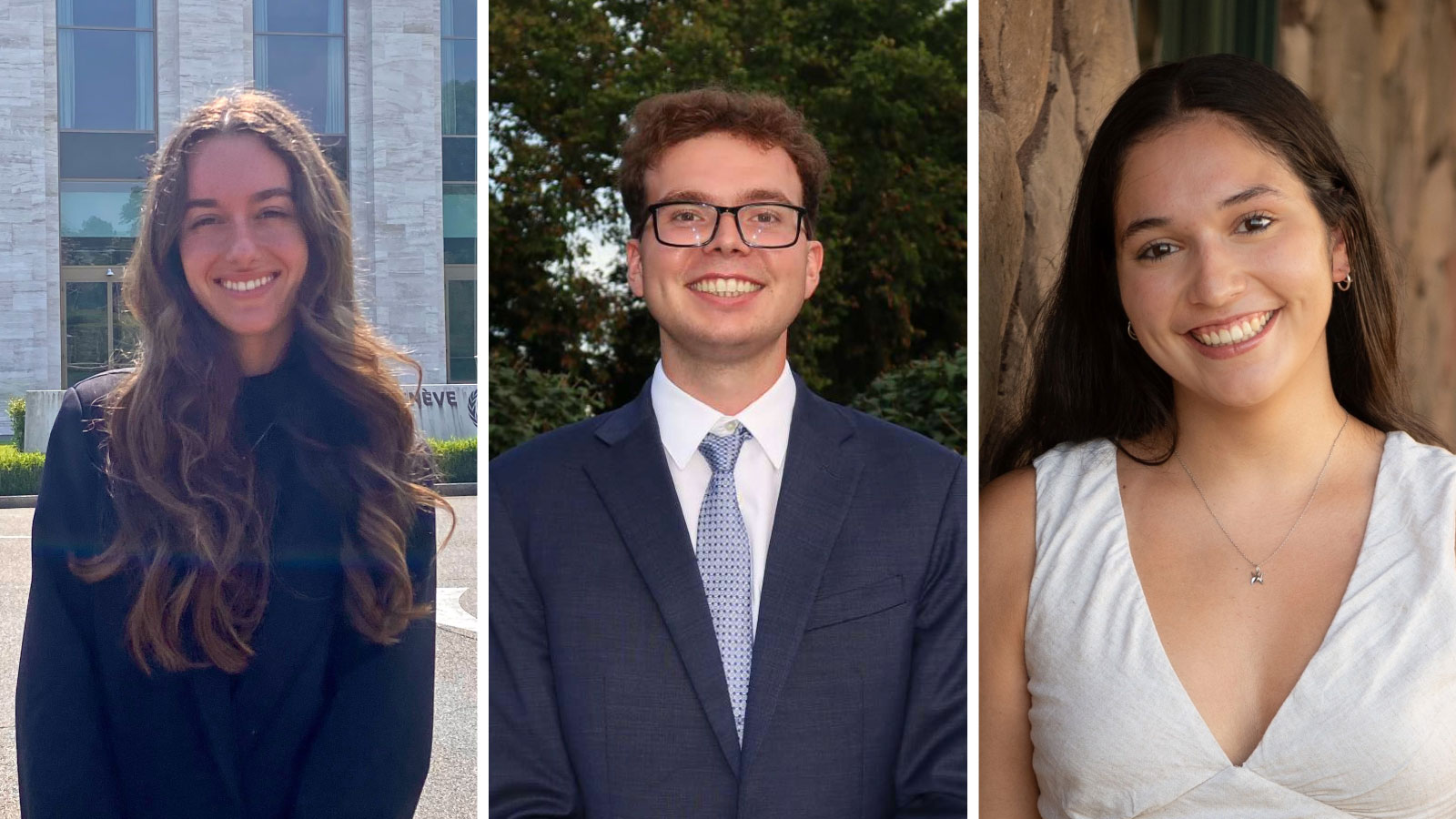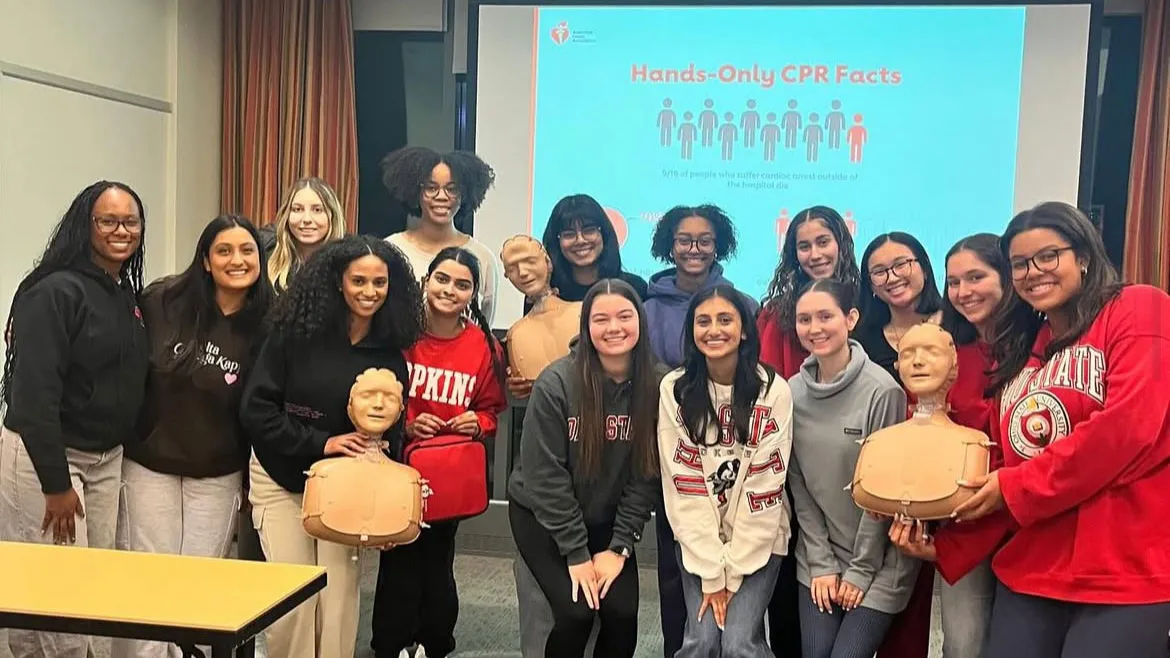Enhancing majors: Students develop career skills in public health minors
Ohio State undergrads better prepared for success with public health perspective
By Anthony Rodriguez

It’s easy to find a connection to public health at Ohio State. Researchers collaborate with experts across the university. Many student organizations focus on improving health.
And in the classroom, students from 10 Ohio State colleges are pursuing one of three minors offered by the College of Public Health — seeing the value to enhance their primary degree with education about the health and well-being of communities.
“Now, more than ever, it’s really important for students to be educated citizens in the things happening around the world,” said Rebecca Andridge, associate dean for undergraduate studies. “Understanding the language of public health can better prepare you to succeed in a multitude of careers.”
Three students share how a public health minor complements their major and enriches their Ohio State experience.

‘The perfect bridge’
Among the thousands of delegates from 200 countries at the 29th United Nations Climate Change Conference last year, Carissa Garcia leaned into her global public health minor in a big way.
While in Azerbaijan, she learned more about the health threats brought on by extreme weather, how air pollution is contributing to more widespread respiratory illness and the spread of vector-borne disease as global temperatures rise.
“Because of my coursework in global public health, I was able to follow those discussions on a deeper level and even contributed to conversations with experts like the director of public health and environment at the WHO (World Health Organization) by connecting the science to broader social and cultural contexts,” Garcia said.
The global public health minor has been “the perfect bridge” to connect Garcia’s double major in international relations and medical anthropology with real-world health challenges, she said.
| Course number | Course title | Credits |
|---|---|---|
| PUBHLTH 2010 | Critical Issues in Global Public Health (GE) | 3 credits |
| PUBHEPI 2410 | Epidemiology in Public Health (GE) | 3 credits |
| PUBHEHS 3310 | Current Issues in Global Environmental Health (GE) | 3 credits |
| PUBHHBP 3510 | The Role of Behavior in Public Health (GE) | 3 credits |
| PUBHHMP 3610 | U.S. and International Health Care (GE) | 3 credits |
“One of the most valuable things I’ve gained from the minor is a practical framework for applying theory to real-world challenges,” Garcia said. “It has pushed me to consider how policy, medicine and culture all intersect and influence how inequalities in health outcomes are produced and, more importantly, how health care systems can be designed to be culturally competent and equitable.”

Combining creativity and health
As an aspiring contemporary dancer and physician, Anya Huth uses dance to tell stories and communicate in ways words cannot express. The public health and the arts minor highlights how interdisciplinary art and science can be, she said.
“What I like about the minor is how it’s not just ‘this is what public health is’,” Huth said. “It’s more how you can communicate what it is to a wide variety of audiences that have different levels of education. And I think dance can be one of those vessels to communicate.”
The minor explores how arts and culture are essential to health and wellness. Students can choose from nearly 50 courses to develop an understanding of public health and its connections to arts and the humanities.
| Course number | Course title | Credits |
|---|---|---|
| PUBHLTH 2010 | Critical Issues in Global Public Health (GE) | 3 credits |
| ARTEDUC 2600 | Visual Culture: Investigating Diversity and Social Justice (GE) | 3 credits |
| ENGLISH 2276 | Art of Persuasion (GE) | 3 credits |
| PUBHLTH 3010 | Public Health and the Opera (GE) | 3 credits |
| HTHRHSC 2530 | The Evolving Art and Science of Medicine (GE) | 3 credits |
As Huth pursued her minor coursework, the pre-med student also expanded her experiences working in a research lab that uses dance as therapy and joined the student organization Buckeyes for Public Health.
When she makes the transition from the stage to making rounds during medical school, Huth is eager to apply her public health knowledge.

Creating connections with people and data
Nate Plant, a fourth-year biochemistry major and president of Buckeyes for Harm Reduction, discovered how much he valued public health through volunteering, learning from others and understanding the stories of those struggling with substance misuse.
These experiences and connections led Plant to pursue an epidemiology minor where he learns about quantitative measures of public health challenges and how to design intervention and prevention strategies — an ideal match for someone who loves to dig into data.
“Epidemiology was a good fit for me,” Plant said. “It lets me…use all the methods I have learned from my statistics classes and science classes and taught me how real-world problems and social issues really impact the person.”
| Course number | Course title | Credits |
|---|---|---|
| PUBHEPI 2410 | Epidemiology in Public Health (GE) | 3 credits |
| PUBHEPI 5412 | Global Epidemiology of Infectious Disease | 3 credits |
| PUBHEPI 5438 | Cardiovascular Disease Epidemiology | 3 credits |
| PUBHEPI 4410 | Social Epidemiology | 3 credits |
| PUBHEPI 3411 | Public Health Field Investigation (GE) | 3 credits |
Social Epidemiology (PUBHEPI 4410) was critical to helping Plant understand how complex social factors are key contributors to health outcomes.
“You need data to make change, but data alone can’t do it,” he said.
Plant’s public health classes and work with Buckeyes for Harm Reduction have also opened opportunities at Ohio State. He and his student organization partners will present their findings on overdose response curriculum at the 2025 American Public Health Association annual meeting in Washington, D.C.
His public health education also helped him land a student position in a biomedical informatics infectious disease laboratory in the College of Medicine.
“Public health is the best way to get that experience of understanding people, regardless of your major or what you will do,” he said.